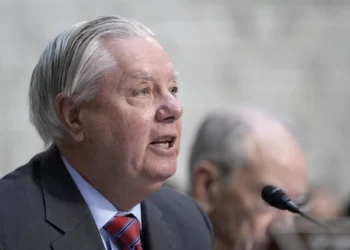While various influences determine employment levels, immigration is one factor — other than tariffs — that has changed perhaps the most since President Donald Trump entered office.
“I think it’s not surprising that there’s been some hit on the job numbers, because when you have fewer workers, you’re going to have less economic activity,” Stuart Anderson, executive director of the nonpartisan National Foundation for American Policy, told the Washington Examiner.
Stuart noted that the number of foreign-born workers has declined by 1.2 million since January, when the second Trump administration began, and 1.7 million since its peak in March.
Trump was asked Tuesday during a bill signing about the drop-off in foreign-born workers, and whether it would translate to higher wages for native-born workers.
“We want to take care of our American workers first and foremost, and that’s what we’re doing,” Trump said.
Reduced inflows of both illegal and legal immigration from the southern border with Mexico and refugee resettlement programs have affected job growth less than the deportations in recent months, said Stan Veuger, a senior fellow in economic policy studies at the American Enterprise Institute.
Veuger listed specific refugee resettlement programs, programs for Afghans and Ukrainians, and more.
“And those programs combined in fiscal 24 were about half a million people, you add the border to that, and then you would expect a big decrease,” he told the Washington Examiner.
The immigration numbers and their potential impacts on the labor supply and job numbers are of particular interest given the latest jobs report for July, which featured big revisions and culminated in Trump firing the commissioner of the Bureau of Labor Statistics, a move that faced major pushback from many economists.
The July jobs report revealed that some 258,000 fewer jobs were added in May and June than previously reported. That means the three-month moving average of job gains was just 35,000 in July, below the level needed to keep pace with population growth. However, if immigration has stalled, only as few as 50,000 jobs are needed monthly to keep the unemployment rate steady.
Trump alleged that the lower numbers were “rigged,” although his own immigration policies could be behind the lower readings, at least to some degree.
Veuger conducted a research paper alongside a few others that was released last month. The paper analyzed how changes in immigration under both low- and high-end scenarios might shape the U.S. employment market and other macroeconomic indicators in the coming years.
They found that Trump-era immigration changes would put notable downward pressure on growth in the U.S. labor force. They predicted that potential monthly job growth in 2025 would be between 40,000 and 70,000 under the low-end immigration scenario and 60,000 and 90,000 per month in the high-end scenario.
Those numbers would slow even further in 2026, with the high-end scenario netting 40,000 to 80,000 monthly jobs growth and less than 40,000 jobs added per month in the very low immigration modeling.
But there are mixed verdicts on how the changing immigration landscape could affect the overall economy.
For instance, E.J. Antoni, an economist with the conservative Heritage Foundation, said the BLS does not distinguish whether foreign-born workers are in the U.S. legally or not. He said that because of “the flood” of illegal immigrants under former President Joe Biden, he expects there to be an “abnormally high” number included in the jobs data.
“All that to say it would not surprise me, therefore, if this whole crackdown on illegal aliens in the country and their subsequent removal is going to have a negative impact on that employment figure,” Antoni said.
Antoni said that fewer immigrants could put upward pressure on wages. If there is a lower supply of workers and more demand for those workers, wages could rise.
“As you start to rein in that huge supply increase, you should see exactly that. You should see wage growth pick back up, all else being equal,” he said.
Annual hourly earnings growth increased from 3.7% in June to 3.9% in the latest employment report.
Mark Hamrick, senior economic analyst at Bankrate, pointed out that recent immigration influxes have helped generate both the supply and the demand for labor.
“Immigrants are consumers, immigrants are workers,” he said. Hamrick said that while the immigrants add to the labor supply, they also generate economic activity by increasing demand for goods and services in the U.S.
Some also argue that fewer foreign-born workers in the U.S. would mean more jobs for domestic workers. But Anderson said that it’s more complicated than that.
“The reality is immigrants are going to be spending as consumers, and that’s going to help generate more economic activity,” Anderson said. “And also, employers are going to pull back on investing. Entrepreneurs and other employers are going to pull back if they can’t find the workers.”
FACT CHECK: TRUMP’S CLAIM THAT PRE-ELECTION JOBS REVISIONS HELPED DEMOCRATS
For instance, he said if a restaurant owner thinks about expanding and opening a second restaurant, but can’t find enough workers, they will likely put off that expansion. Anderson also said that while immigration has decreased, the unemployment rate for native-born workers has increased since the start of the year.
“That’s not something the administration has boasted about, nor have they said it’s inaccurate,” he added.















